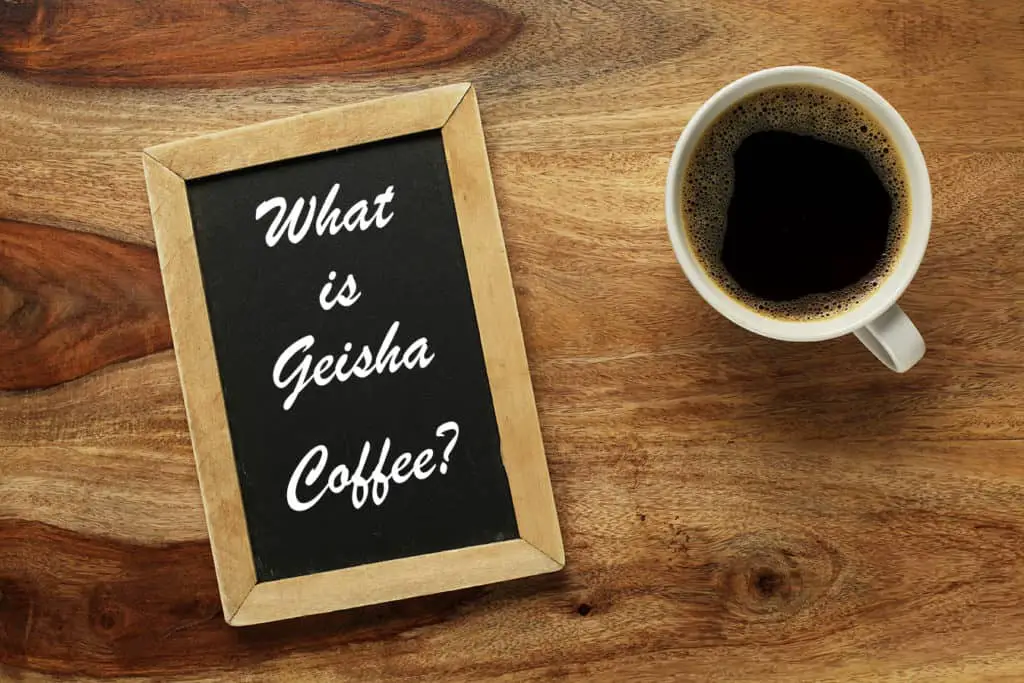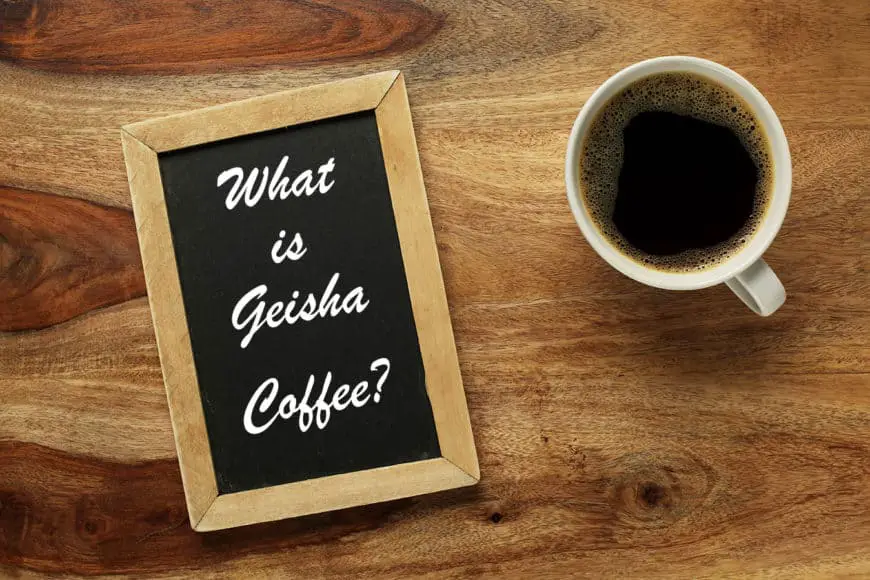
Have you heard whispers about Geisha coffee and wondered what makes it so special—and so expensive? Maybe you’ve considered splurging on a cup or a small bag but aren’t sure if it’s worth the hype.
In this comprehensive guide, we’ll dive into everything you need to know about Geisha coffee (also spelled Gesha coffee), from its fascinating origins to its unmatched flavor, steep price tag, and whether it deserves a spot in your coffee collection. Let’s explore what it takes to grow, harvest, and enjoy this luxurious brew.
What Is Geisha Coffee?
Geisha coffee, often referred to as Gesha coffee, is widely regarded as one of the most exclusive and sought-after coffee varieties in the world. Originating from Ethiopia, it gained global fame through Panama, where it’s now most famously cultivated. Known for its distinctive floral and fruity flavor profile, Geisha coffee stands out in the specialty coffee scene for its rarity, quality, and jaw-dropping price.
Unlike mass-produced beans, Geisha coffee is a delicacy that cafes and roasters compete to acquire, often through high-stakes auctions. A single cup can cost anywhere from $9 in Panama to $68 in Dubai, with premium batches fetching hundreds—or even thousands—per pound. But what’s behind the buzz? Let’s break it down.
Geisha vs. Gesha: What’s in a Name?
You might have noticed the dual spelling: Geisha and Gesha. This isn’t just a typo—it’s a point of contention among coffee enthusiasts. The name originates from the Gori Gesha forest in Ethiopia, where the variety was first identified in the 1930s. Locals call it “Gesha,” but a misspelling as “Geisha”—evoking Japanese entertainers—stuck as it spread globally.
This mix-up has led to confusion, with some cafes leaning into the Japanese imagery despite its irrelevance. Purists argue for “Gesha” to honor its Ethiopian roots and avoid cultural missteps, but “Geisha” remains the more recognized term. Either way, it’s the same exceptional coffee.
The Origins and Journey of Geisha Coffee
The story of Geisha coffee begins in Ethiopia, the birthplace of coffee, where it was discovered in the 1930s near the village of Gesha. British explorers collected seeds, noting its resilience to coffee rust—a disease that plagues many crops. In the 1950s, these seeds traveled to Costa Rica for study at the Tropical Agricultural Research and Higher Education Center (CATIE). From there, they reached Panama in the 1960s, finding a perfect home in the Boquete region’s volcanic soil and high altitudes.
It wasn’t until 2004 that Panama Geisha coffee exploded onto the global stage. The Peterson family of Hacienda La Esmeralda entered their Geisha beans in the Best of Panama competition, stunning judges with its unique taste. That year, it sold for $21 per pound at auction—a record at the time. Since then, prices have soared, with some lots, like the Elida Natural Geisha, hitting $1,029 per pound in 2019.
Today, while Panama remains the gold standard, Geisha coffee is also grown in Colombia, Costa Rica, Guatemala, and even back in Ethiopia, each region adding its own twist to the flavor.
What Makes Geisha Coffee So Special?
The Geisha coffee plant, a variety of Coffea arabica, is finicky. It thrives at high altitudes—typically 1,400 to 1,800 meters (4,600 to 5,900 feet)—where cooler temperatures slow cherry maturation, intensifying flavors. In Panama, it’s grown on Volcan Baru, the country’s tallest mountain, in rich volcanic soil kissed by frequent mists. These conditions are non-negotiable, limiting where and how much Geisha can be produced.
The Harvesting Process
Unlike commercial coffees harvested by machine, Geisha coffee cherries are hand-picked at peak ripeness. Workers make multiple passes through the fields, selecting only the reddest, ripest cherries—a labor-intensive process that ensures quality but reduces yield. After picking, the cherries are dried for about 8 days (or until they reach optimal humidity), then sold as “green” beans to roasters who perfect the final product.
The Flavor Profile
The real magic of Geisha coffee lies in its taste. Experts describe it as tea-like, with a silky mouthfeel and bright acidity. Common tasting notes include:
- Floral: Jasmine, rose, bergamot
- Fruity: Mango, mandarin, guava, peach
- Sweet: Honey, citrus
The Specialty Coffee Association (SCA) scores coffees on a 100-point scale, and Geisha coffee consistently ranks above 90—often hitting 94 or higher—making it a standout among premium varieties like Jamaican Blue Mountain or Kona.
Who Grows Geisha Coffee?
Hacienda La Esmeralda in Panama’s Boquete region is the poster child for Geisha coffee. This family-run farm pioneered its rise, refining cultivation techniques since the 1960s. Their meticulous care—combined with ideal terroir—produced the beans that won the 2004 Best of Panama award, catapulting Geisha to fame.
Other notable producers include farms in Costa Rica (e.g., Santa Felisa), Colombia, and Ethiopia’s Gesha region, where the variety is making a comeback. Each offers a slightly different take on Geisha, influenced by local climate and soil.
Why Is Geisha Coffee So Expensive?
The price of Geisha coffee—ranging from $80 for 6.7 ounces to over $1,000 per pound at auction—stems from several factors:
- Limited Supply: Geisha trees yield fewer cherries than other varieties, and their specific growing requirements restrict production to small, high-altitude farms.
- High Demand: Since its 2004 debut, coffee aficionados and roasters worldwide have clamored for it, driving up prices at auctions like Best of Panama.
- Labor Intensity: Hand-picking, selective harvesting, and careful processing demand significant time and effort.
- Exclusivity: Its reputation as “the champagne of coffee” adds a prestige factor, further inflating costs.
Beware of “cheap Geisha coffee” online—it’s often counterfeit. Authentic Panama Geisha coffee doesn’t come at a discount. For a reliable option, try Hayman’s 100% Panama Geisha beans on Amazon, priced at $80 for 6.7 ounces.
Is Geisha Coffee Worth the Price?
The Case For Yes
If you’re a coffee lover, Geisha coffee is a bucket-list experience. No other bean offers its unique combination of floral aroma, fruity complexity, and smooth texture. Its 94+ SCA score backs up the hype, and one sip can ruin you for ordinary coffee. For enthusiasts, the cost—starting at $9 per cup in Panama or $18 in New York—is a small price for such a singular treat.
The Case For No
If you’re not attuned to subtle flavor differences or just need a caffeine fix, Geisha coffee might feel overpriced. It has about 30% less caffeine than typical Arabica beans, so it’s not ideal for a quick jolt. Casual drinkers might prefer a cheaper alternative like Ethiopian Yirgacheffe, which shares some floral notes at a lower cost.
Ultimately, it’s worth it if you value the experience over the expense.
How to Enjoy Geisha Coffee
To get the most out of Geisha coffee:
- Brewing Method: Use a pour-over (e.g., Chemex) or French press to preserve its delicate flavors. Avoid milk or sugar—they mask the nuances.
- Grind: Opt for a medium-fine grind, fresh-ground just before brewing.
- Source: Buy from reputable sellers like Hayman or specialty roasters to ensure authenticity.
Final Thoughts: Should You Try Geisha Coffee?
Geisha coffee isn’t just a drink—it’s a journey through history, craftsmanship, and flavor. From its Ethiopian roots to its Panamanian perfection, it’s earned its title as one of the world’s best coffees. Whether you’re a connoisseur or a curious newbie, a cup of Panama Geisha coffee is an indulgence worth considering—just make sure it’s the real deal.
Ready to taste it? Start small with a trusted supplier and savor every sip.

